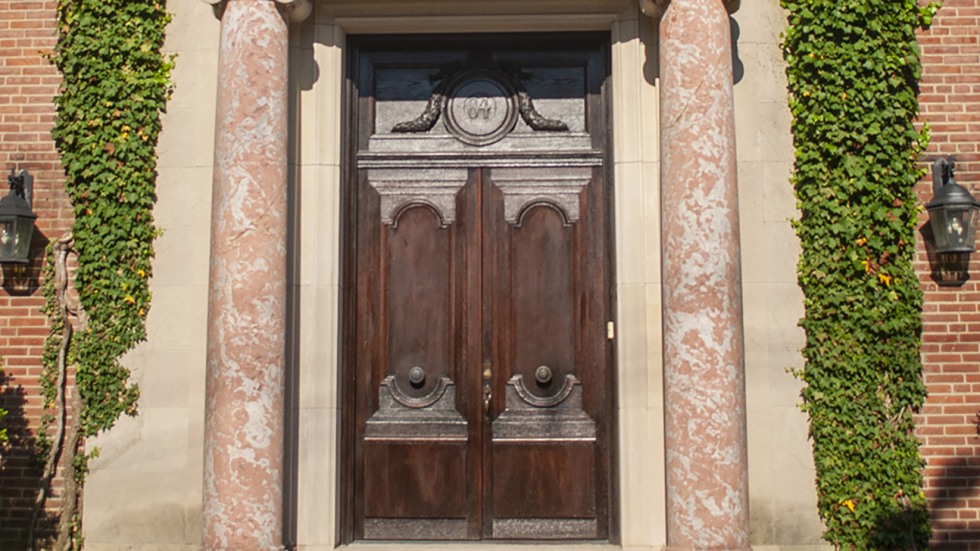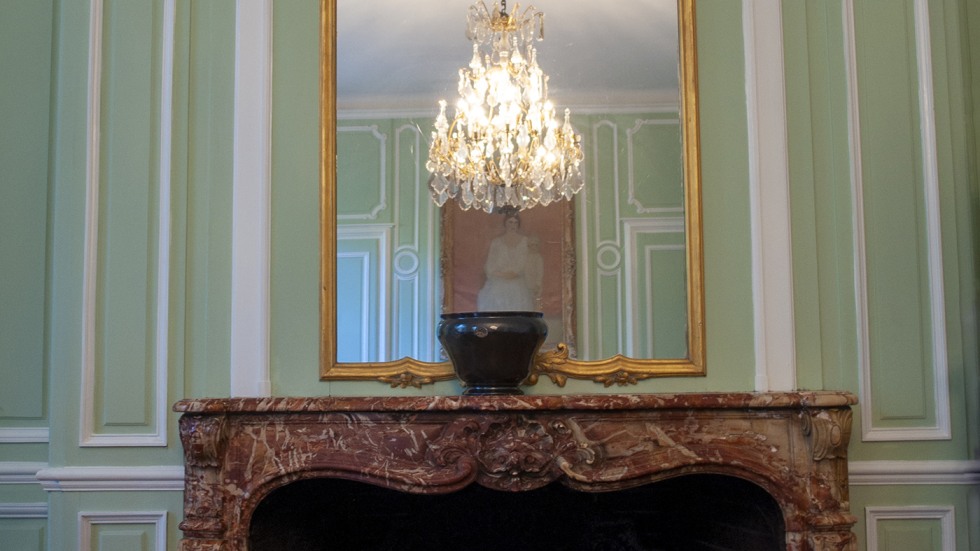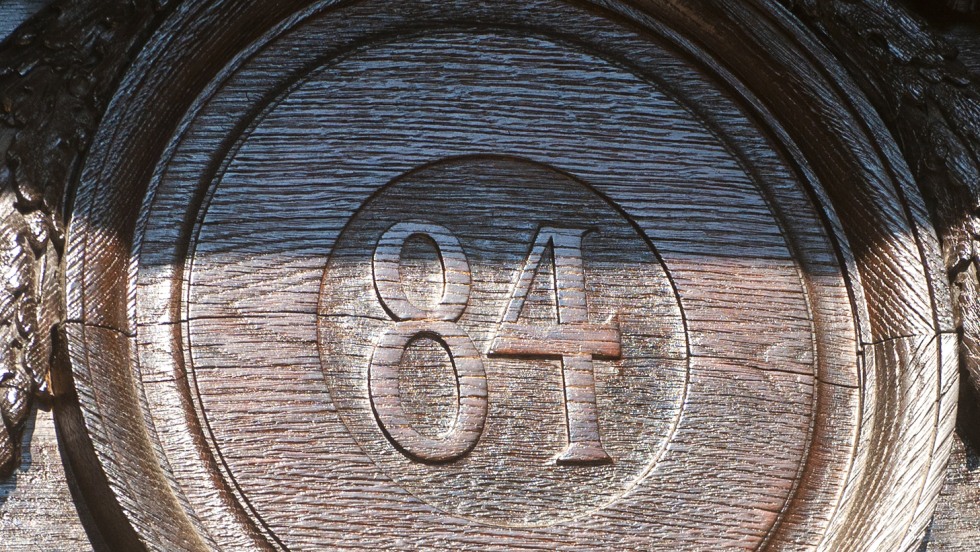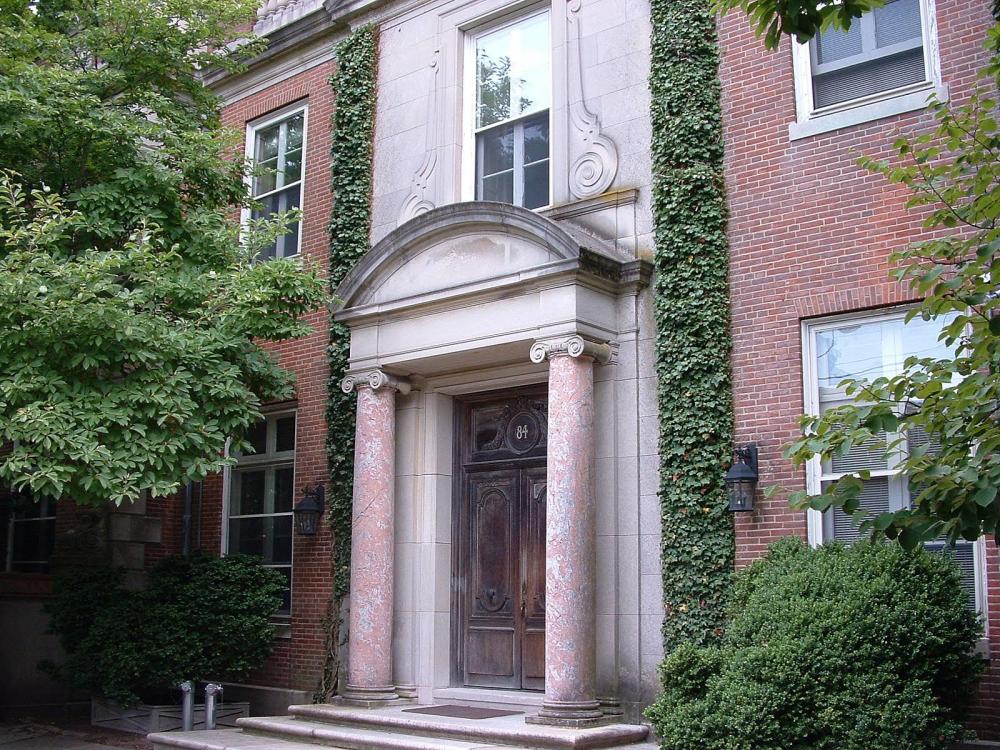 Rochambeau House
Rochambeau House
84 Prospect Street
Parker, Thomas & Rice, architects
Owned and occupied by Brown University
Naming and Origins
Rochambeau House was named for Jean-Baptiste-Donatien de Vimeur, comte de Rochambeau (1725-1807), the French General who fought alongside George Washington at the battle of Yorktown in the American Revolutionary war.
Designed by a Boston firm of distinguished residential architects in close collaboration with Mrs. Sharpe, this substantial house recalls Parisian hotel particulars of the eighteenth century. Both the picturesque farms and chateaux and the sophisticated city dwellings of France were used as sources for American houses in the 1920s. Providence has a number of these, but this is by far the most substantial.
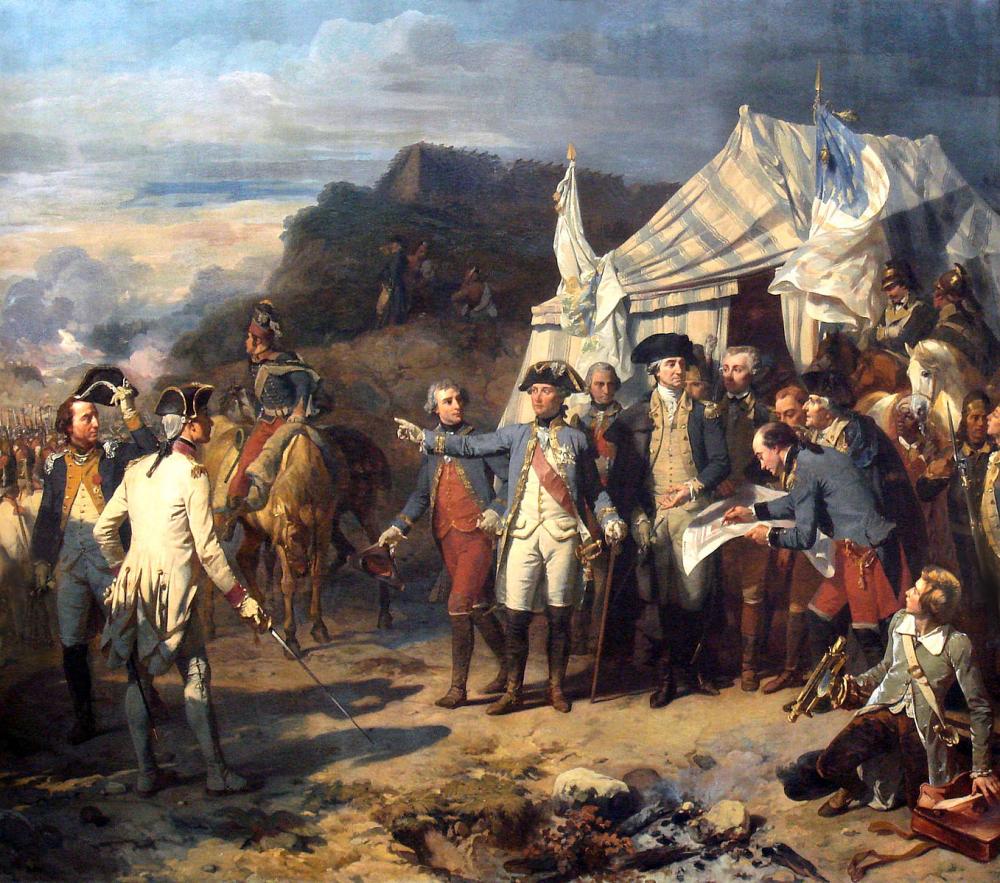
What most distinguishes the Sharpe House is quality of design and workmanship in concert with the personal vision and involvement of Mrs. Sharpe, whose good taste and personality reveal themselves throughout the house and the garden. Much of the interior decorative work, including a number of cornices and all of the paneling in the southeast room, was imported from France.
Present Day
The use of French sources here makes the building eminently appropriate for its reuse by Brown. Today, as Rochambeau House, it is home to the University’s Department of French and Francophone Studies and Department of Hispanic Studies, fulfilling Mrs. Sharpe's wish to see her home used by her husband's and son's alma mater. Mrs. Sharpe’s great passion was landscape. Responsible for plantings at Brown University, India Point Park, and throughout the city through the Sharpe Tree Fund, she oversaw the developing landscape around her house. In the early 1980s, she reflected on her design involvement: "My biggest contribution is the garden, with its plan and plantings entirely my doing. No landscape designer helped me in the garden."
On the west side of the house is a terrace overlooking a formal lawn, with beds and paving arranged in false perspective to increase the perception of depth. Attention to detail is keen: a seventeenth-century English lead water spout with Mr. Sharpe's monogram, espaliered pear trees along the west wall, and garden benches copied from those in Napoleon's garden in Elba. Throughout the grounds, both spatial organization and selection of materials are superbly balanced.


